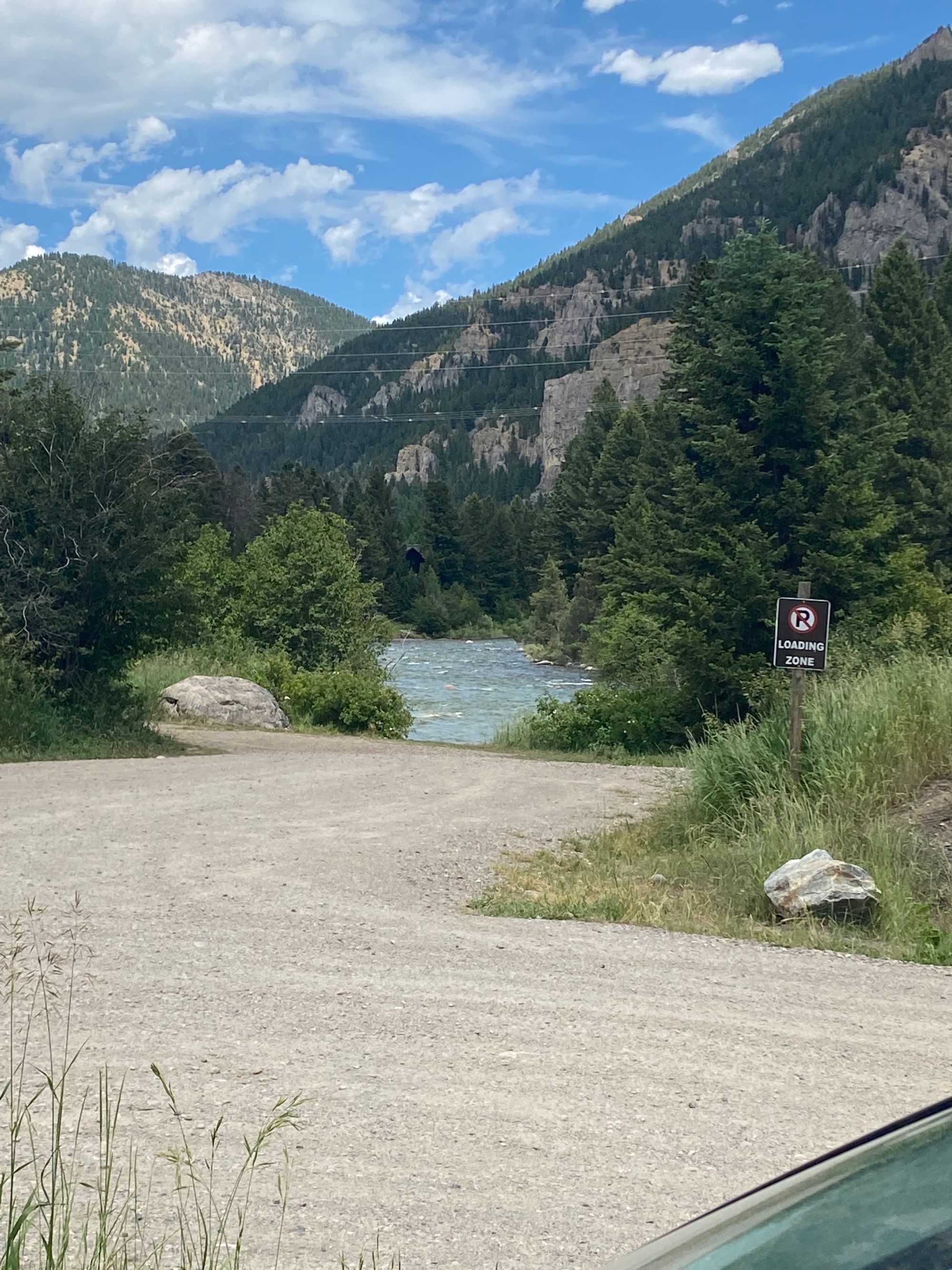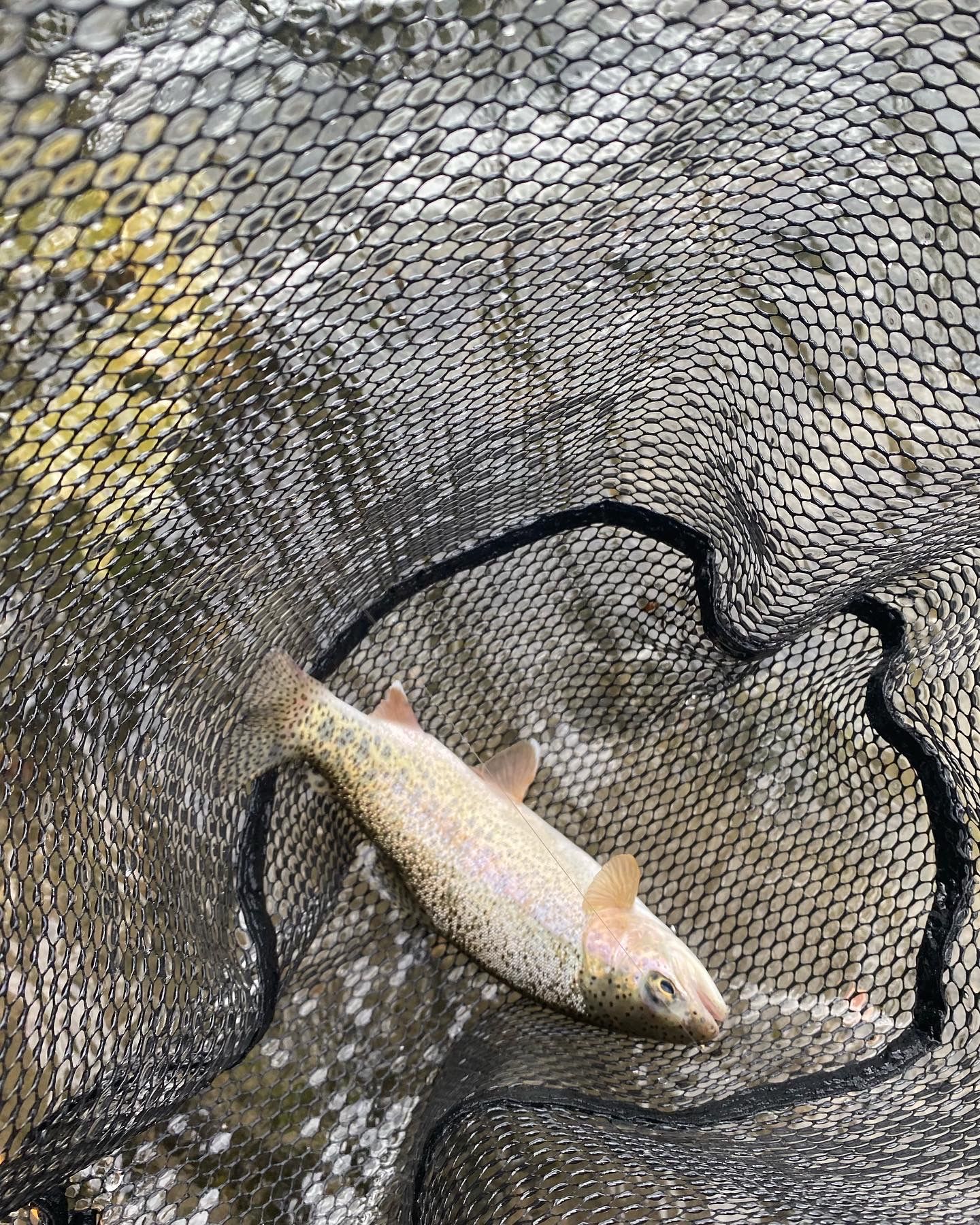A Texan Fly Fisher in Montana

First off, I thank you for reading and even if you think you already have, if you would please subscribe again, it won't hurt and I think some of you believe yourself to be subscribed, yet are not!
Here is a button for you that will take you to the signup page!
Well, we ran a poll on Instagram this week asking a few of our readers what they would like to see. The result... A Fly Fishing Story.
Huh, who would have thought that would win?
Not I.
My move to Montana was and is a bit of a blur to me still. I had been first denied the job I applied for here and had not expected to hear from the same company again. To my surprise, I heard from them about three weeks after they had first denied me with a job offer.
Obviously, I accepted. I accepted for one reason really, I get to live in fucking Montana, Fly Fishing Mecca.
Why is Montana considered Fly Fishing Mecca, you dear reader may be asking yourself.
Answer. Montana is located smack in the middle of the gorgeous Rocky Mountains, as a result, it snows… a lot, this snow collects on the mountains and when it warms up enough, melts off the mountains forming some of the world’s most incredible natural rivers. In these natural rivers live the elusive and mystical trout. From Browns to Rainbows (types of trout you heathen, you), Montana has you covered.
Rivers like the Madison are famous worldwide for their population of ridiculous size Bull Brown Trout. Or the Blackfoot River featured in the movie A River Runs Through It. Not to mention the seemingly thousands of small creeks and offshoots of bigger rivers that you can fish at any time.
Hell, I didn’t even mention the Yellow Stone river, well now I did, but I didn’t give you shit about it and I won’t, so look it up if you care. HA!
Interestingly enough, the fishing scenes in A River Runs Through It are not filmed on the Blackfoot River at all, they were filmed on mine and the Bozemanite's local playground, The Mighty Gallatin.
So, today I will share with you a short tale of an adventure this summer on The Mighty Gallatin River.
The First Montana Trout
This memory is seared into my brain, and I believe it is one that I will hold onto dearly for the rest of my life.
I must first give a little bit of context behind my fishing history, for those of you that don’t know. I was born and raised in the best state, Texas. In Texas, there are a few options for fly fishermen in my experience, bass fishing and saltwater fishing. Both are badass in the sense that you get to use big ass flies that imitate bait fish, frogs, or other big creatures. This makes it fun because you can bomb the shit your of your cast, casting 60-80 yards at a time covering vast amounts of water and just generally being an accurate caster with the heavier fly at the end of your line.
The trout game in Montana is nothing like this.
Trout fishing requires a different mindset and different flies.
Bombing a cast 70 yards on a river is possible (I’ve done and still do it) but not practical in any way. The river is a constantly flowing entity that trout utilize almost like a conveyor belt when they are feeding. They find a spot within the current, usually at areas in which there is some sort of convergence between two different flows and park themselves, waiting for delicious bugs and on occasion a small bait fish to get into their lane and be eaten by the waiting monster. To my understanding, they do this to exert as little energy as possible, as swimming against a current is difficult. My science might be wrong on that, but this isn’t a science journal, it’s a fishing story.
So, the most effective tactic in Montana is using two flies, something unheard of in Texas. You tie a floating fly, that imitates some sort of bug that can land on the water and remain on top without sinking (i.e. Grasshopper). This fly is not only used to attract some fantastic jaws-like bites and takes but it is also used as an indicator for the second fly that you attach to the hook of the first fly.
This second fly is a small midge or something of the sort, an imitation of a larva or a small aquatic bug that lives in the river. These tend to be the real big-ticket item, most often you will catch your fish on this rig with the bottom fly.
I’ll circle back quickly here to the indicator fly. When it stops moving or weirdly dips below the water, you know someone is grabbing the lower fly and it becomes your duty to lift your rod straight to the sky and hope to hook the intruder.
How do you know if something is hitting your indicator fly? You may ask.
Answer: You’ll know.
Now, while I tell you all this, I must also tell you that I very much do not enjoy this style of fishing, I miss bombing it 100 yards (notice how I keep moving up on my brags, take notes, future fisher people). I have found a solution to this issue, and it involves throwing huge streamers with the only goal being to catch massive fish, but that is a story for another day. For now, I will stick with the truth and tell you how I managed to catch my first Montana trout.
I cannot remember exactly how many times I went, but I would say that I went to the Gallatin in those first few weeks every single day without fail. The clock struck 4 and I was out the door barreling down towards the Gallatin canyon looking to learn and fish every second I could.
The first fish did not come until the second week.
In my daily adventures down the canyon, I was trying new spots almost every time. Until I stumbled upon a very easy access ramp. One used by the many float trip companies to pull out their white water rafts. So, the spot was a bit annoying in the sense that every hour or so a big group of floaters came tumbling down through my fishing hole. But, they were always kind and had shit-eating grins on their faces from the adventure they had just had, so much so that I will make it a point to do a white water raft trip on the Gallatin this upcoming summer. So that I to can experience those shit eating grins I saw so many wearing.
It is the perfect spot for a solo, inexperienced, Texan to get their chops, the water isn’t deep, the river is not too fast and you can easily see where you will end up if you slip and fall. That’s important. And there are about 5 or 6 very promising-looking convergences and holes that always look extremely fishy.
The fateful day of my first catch was not much different from my other days. I had discovered my new spot only a few days before and had decided to let it cool down for a few days after I had first fished it. On my way by every day I made sure to look and see if any other anglers were utilizing the spot, they were. Another great sign.
So, I pulled into my spot this day, said hello to the river guides waiting on the returning floaters, and headed into the water.
My usual move was to first walk upriver (I would recommend this if possible, it takes some effort to fight the flow, and it’s good to work that water early rather than bailing on even attempting after an hour of failing downriver). However, on this day, after many days of working that fast-running upper section without luck, I decided to work the lower section for the entirety of this afternoon's fish.
T’was a good call.
The lower section of the River Raft Rut (my name of the spot) at 4 p.m. is quite spectacular. The sun has about a quarter of its journey left to brighten the days of our friends on the other side, and because of this casts some wicked shadows on the river of the bastard green trees that sit waiting to snag a whipping fly and rock formations that seem to be teetering on a piece of dental floss looming above. It is indescribably gorgeous.
Pictures do not do it justice, but here, have one anyway.

From the moment I stepped down into the Raft Rut my eyes had been keyed on a particular hole.
The largest tree that sits on the River Raft Rut was casting its dominant shadow right across the middle of the river in a diagonal manner, and its leaves and branches cast a shadow directly over the hole my eyes had shot to upon walking down.
The hole itself was caused by a rock that had resulted in the river's flow missing a spot right behind the rock, a soft pool, a perfect spot for a lazy trout to wait for cheap eats to come twirling into.
Today, a specially made blue and green midge was about to be served up hot and ready by yours truly, right into the pool.
I won’t bore you with the details of traversing a river to get to the spot you want to fish. So instead, I will leave you with a bit of imagery. Imagine those water buffalo you have most likely seen in Nat Geo videos that are crossing alligator-infested water, remember the way they look as they seem to struggle across the river? That jerky motion as they traverse the river with a stressful amount of effort, you know the one I am talking about. That’s how I imagine I looked then, as with each step I took I seemed to lose my footing and was forced to do a little shimmy of balance.
It took me a minute to get in position but once I did, I began to tie the small blue and green midge to my floater fly’s hook. Sifting through my brain looking for every tip and fishing trick I had heard of in the past month.
I began to cast, now at this time I was still very resistant to any sort of 20-foot cast (and still am) so instead, I began back casting, saltwater style, right smack in the middle of the river, generating an incredibly unnecessary amount of power for using a midge and a chubby. After false casting way too many times I launched the thing way upriver and tried to spy the small white foam that was my chubby fly, hoping I had geometry wizarded (new word alert) my flies into the soft pool we spoke of earlier. On this cast, it did not.
Now surely you must think I got smart and shortened my cast or took a few steps closer to make it easier and then found triumph. Ah, but that is where you are wrong. The only adjustment I made at this point was probably one less false cast, when looking back at it now I probably only needed a single false cast, but hey I was new.
This second cast though, despite its unnecessary power, was a goodin. Why? Because I caught him on this one. If you ask me(why would you?), while there are pretty-looking casts that don’t catch fish, there is only one type of good cast, the ones that catch.
I wish I could give you a poetic and surreal story of how I watched the creature come launching out of the abyss like a challenger rocket on its way out of the atmosphere. But I can’t. He ate the midge (bottom fly) not the chubby and I share too much here, but the “indicator” fly we spoke so much of early didn’t help me for shit. I had no clue I had a fish until he decided to say hello.
I felt the wiggle. It’s another fishing sensation that can be hard to explain, but it is quite literally just feeling the fish move on the end of your line.
My first move was a hard rip straight toward the sky with the rod. This maneuver hooks the fish. My worry, as trout are a delicate fish, was that since I had not had the where with all to notice him before he made his presence felt, he may have had time to swallow the fly. Not a great situation if a fish swallows a hook, as you can imagine. That was a big reason behind the aggressiveness of my pull, I wanted to get him in the lip before he had the chance. A Lipper.
Once the hook was set, he performed the dance of the trouts, a display of wild acrobatics as they launch themselves out of the water in an attempt to free themselves from the angler who has tricked them.
I played him up the river calmly and gently as he calmed down a bit following the initial shock of being pulled from his quiet pool.
My focus at this point had been placed solely on making sure I landed this fella, and I almost subconsciously began to move across the river like a Blue Heron born to walk a river bed. I went from the middle of the river standing in pretty serious flowing water, to being near the shore and ready to land this fish safely within seconds. It was an awesome feeling, and a fantastic river walking confidence booster. Cautious confidence.
As I arrived at the shore, the fateful moment had arrived. The moment of netting the fish. I continued to handline the small trout towards me and unhooked my magnetic holder for the net I wore on my vest and reached out into the water trying to grab my prize.
I scooped him gently and made sure to leave him in the water. This is an important part of trout fishing, keep the damn fish wet the entire time you are handling them, and before you even think about touching the fish, make damn sure that your hands are wet as well. Keep touching to a minimum, and for any fish you want a picture of, get the camera fully ready before lifting him from the water for only a second.
I followed all of these rules.

As mentioned before, I was concerned that I may have let the fish swallow the fly, a fear that was thankfully unfounded as I took a look at his upper lip and saw the tiny midge had been set in it.
Again, as with many things in this story I find myself struggling to convey the pure jubilation and utter joy I felt throughout these two and half minutes from hook set to release. So instead, I will give you a small glimpse into my understanding of my feelings towards fly fishing.
Fly fishing is the one thing I have ever found that when I am doing it, I am thinking of only one thing. How I can use my arsenal of discovered knowledge to find and catch a fish. It is the most one-track mind experience I have ever found, and that sensation is incredibly freeing in a world in which we are berated with constant shit from Tik Toks to UFOs, the shit never ends.
When I am in nature and fishing, I could give a fuck about it all, and god damn I love that feeling more than anything else in the world.
And that’s how I felt then. Like nothing mattered except for this moment. I had just caught my first Montana trout completely of my own volition. I had moved here, I had studied, and I had conquered.
Go fishing if you don’t already, and if you need someone to go with, you know how to reach me.
Written by Cole B Hirschhorn
